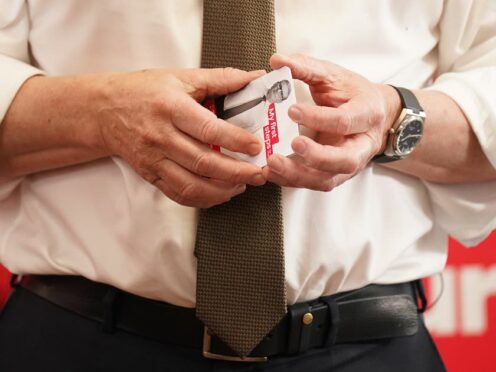Political parties have ramped up their online advertising efforts as the General Election enters its final days, but Labour is still outspending the Conservatives.
Advertising spend on social media platforms owned by Meta, including Facebook and Instagram, doubled last week to £1.21 million, according to transparency campaigners Who Targets Me.
Much of that change was driven by the Conservatives, who spent £332,000 on Meta adverts – more than double the £150,000 the party spent the previous week.
But the Tories continued to lag behind Labour, which spent £350,000 in the course of the week – up from £302,000 the week before.
Labour has consistently outspent the Tories on online advertising throughout the campaign, spending a total of £2 million on Meta adverts compared to the Conservatives’ £1.2 million.
The party has also spent more on adverts on Google and YouTube.
This disparity may partially reflect difficulties the Conservatives have faced in raising funds.
Figures from the Electoral Commission published last week showed the Tories had struggled to raise money in the first two weeks of the election campaign, receiving less than £1 million in donations.
In contrast, the Conservatives received around £8.7 million in donations in the first two weeks of the 2019 election campaign.
Who Targets Me’s analysis also found a difference in the content of the adverts, with the Tory campaign focusing much more on Labour and Labour focusing on its own plans.

Some 83% of the Conservatives’ Meta adverts mentioned Labour, with just 1.1% mentioning Rishi Sunak and 0.4% mentioning Tory policy plans.
Who Targets Me said: “If any number showed how theirs is a ‘don’t vote Labour’ campaign, rather than a ‘vote Tory’ campaign, it’s this.
“The tone has been relentlessly negative and they’ve had little to say about their own plans.
“They’ve lacked a central character, with the PM being entirely absent from the digital campaign since the first week, and there’s been no supporting cast of Cabinet members to help out.”
Conversely, the group said Labour’s campaign had been the “mirror image” of the Conservatives’ plan, with adverts often including the word “change” and the party’s six “first steps”, while barely mentioning the Prime Minister.
Who Targets Me also reported a surge in spending on Facebook and Instagram adverts by Reform UK last week, which went from accounting for 0.75% of the total weekly spend to 10%, shelling out £106,000 and overtaking the Liberal Democrats.
